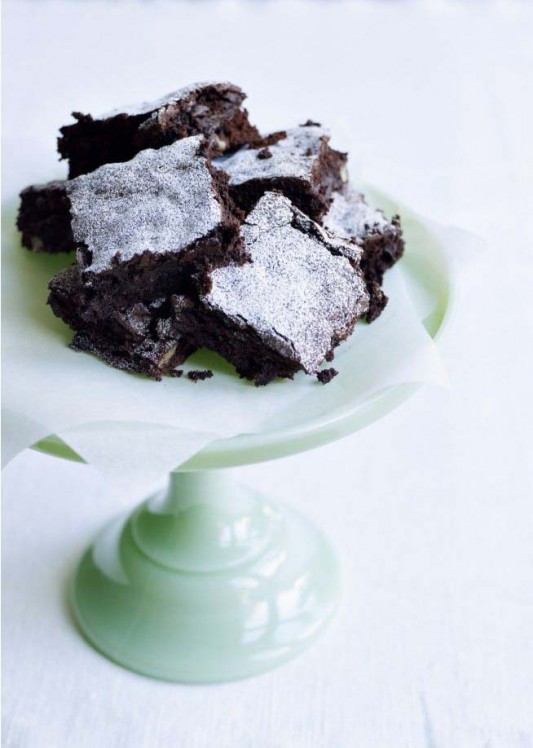Crispy cheese-flavoured biscuits are perfect accompaniment to a glass of wine or beer. They also make excellent companions to vegetable soup. The poppyseed crispbreads are also worth making as they go well with dips, pate or soft cheese flavoured with herbs. They are also delicious topped with smoked salmon or sardines. By making your crispbread you don’t have to stick by the rules and add flavour to suit your palate. Sometimes I swap the poppy seeds for caraway seeds, aniseed, fennel or sesame seeds. I use a little rye flour in the mixture as it gives the crispbread a slightly sour note, but use all plain flour, if desired. The crispy, salty, slightly spiced parmesan crackers crisps can be made without their rosemary stems, if desired. They are best eaten within a few hours of cooking.
Cheese Biscuits
175g plain flour
100g unsalted butter, chilled and finely diced
125g cheddar cheese, finely grated
50g parmesan, grated
Sift the flour and a pinch of salt into a mixing bowl. Add the butter and rub into the flour with your fingertips until the mixture resembles coarse breadcrumbs. Stir in the cheddar and parmesan. Mix well with your hands until the mixture forms a firm dough, then press into a ball. You may need a little water to make the dough hold together since cheeses and butters vary in their water content. Alternatively, place in a food processor and pulse until the mixture comes together. The dough should be dry but smooth and just hold together without being sticky. Divide the dough into two portions.
With a rolling pin, roll each portion between two sheets of baking paper to a thickness of 4-5 mm. Chill for 10–15 minutes.
Preheat the oven to 190C (fan forced 170C) and line an oven tray with baking paper.
Remove the top sheet of baking paper from each piece of dough and cut into shapes with a biscuit or pastry cutter. Carefully transfer the shapes to the prepared oven tray. Cook for 15–20 minutes, or until pale gold. Cool on a wire rack. Re roll any scraps of dough and cut and cook as above. Store in an airtight container. Makes 24–30
Poppy seed Crispbread
300g plain flour
85g rye flour
1 teaspoon salt
1 tablespoon poppy seeds
Black pepper
1 free range egg
1 tablespoon olive oil
125ml (1/2 cup) water
Sift the flours and salt into a large bowl. Stir in the poppy seeds and a few grindings of black pepper. Mix the eggs, oil and water in a jug and then pour into the flour. Mix well, then knead on a lightly floured surface for About 4 minutes. Cover with plastic wrap and chill for about 30 minutes.
Preheat the oven to 200C (fan forced 180C). Line two baking trays with non stick baking paper.
Divide the dough into two potions (keep one portion chilled while you roll out the other). Roll one half on a lightly floured surface until it makes a 24cm square. Fold the dough in half and then in half again and continue to roll until the dough is thin – it should be about as thin as fresh lasagne. The piece of dough will be about 40-45cm square. Cut the dough into 15 rectangles and transfer to the baking trays. Sprinkle with a little sea salt, if desired.
Bake for about 10-12 minutes, until slightly warped at the edges and golden. They should feel dry when ready. Transfer to a wire rack to cool and crisp. Repeat with remaining dough. Makes about 30
Parmesan wafers
About 12 rosemary stems (about 12cm long)
150g grated parmesan
1/2 teaspoon thyme leaves
Pinch cayenne pepper
Preheat the oven to 200C (fan forced 180C). Line two baking trays with non stick baking paper. Combine the cheese, thyme and cayenne pepper. Using a dessertspoon, drop even mounds of parmesan cheese on the baking sheet. Use your fingers to pat the cheese into a thin circle about 4-5 cm in diameter. Lay a rosemary stem on the circle (like a lollypop stick). Make sure that none of the circles are touching.
Bake for about 5 minutes, or until bubbling and golden. Remove and cool slightly on the tray before transferring to a wire rack to cool completely. Best served on the day they are made. Makes 12

